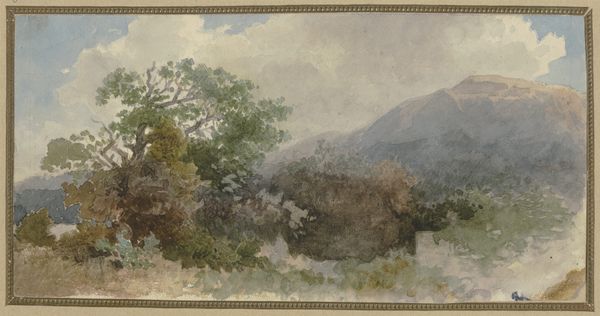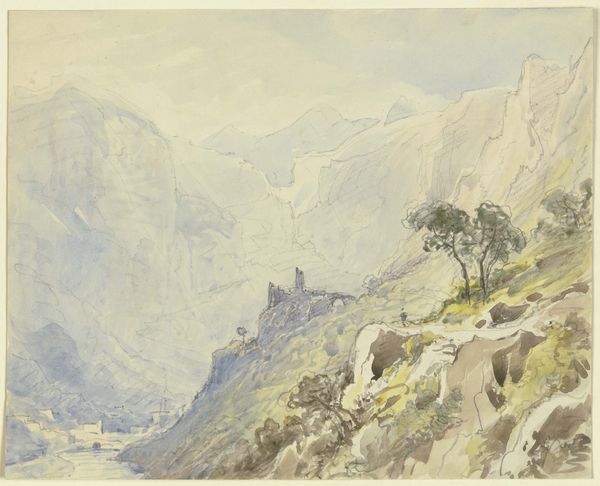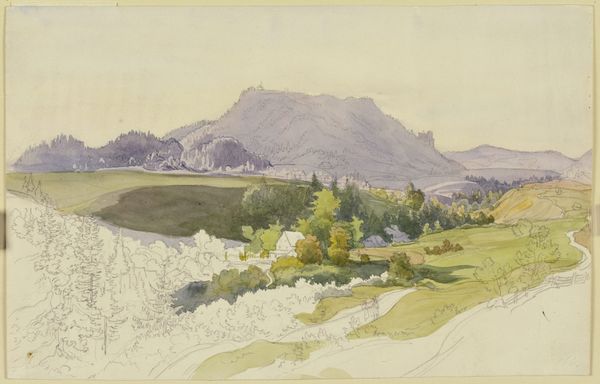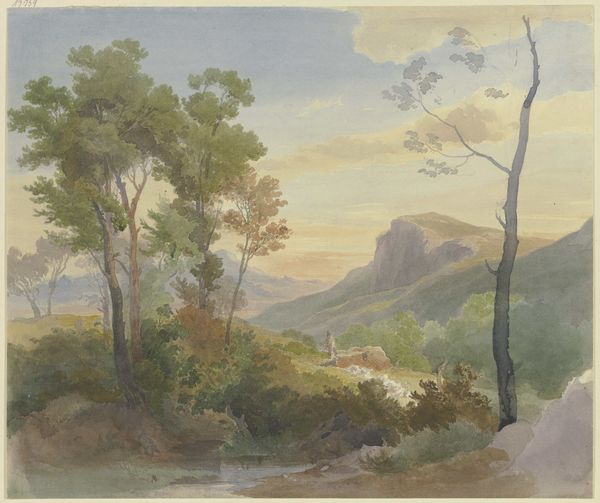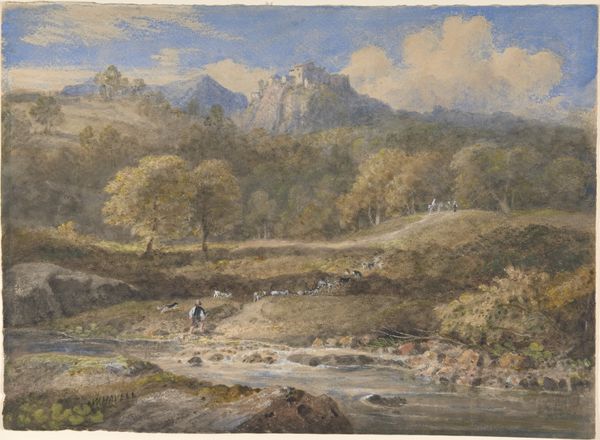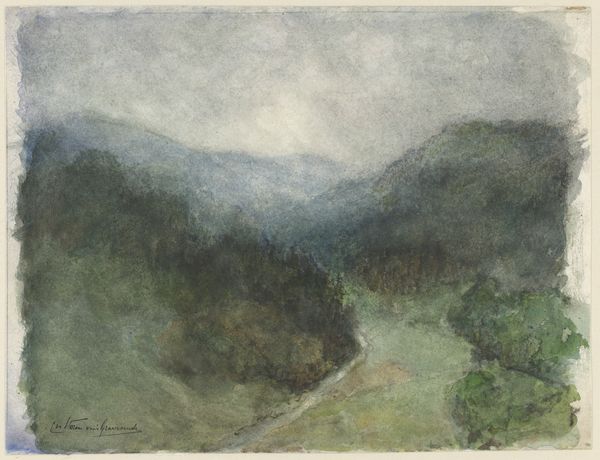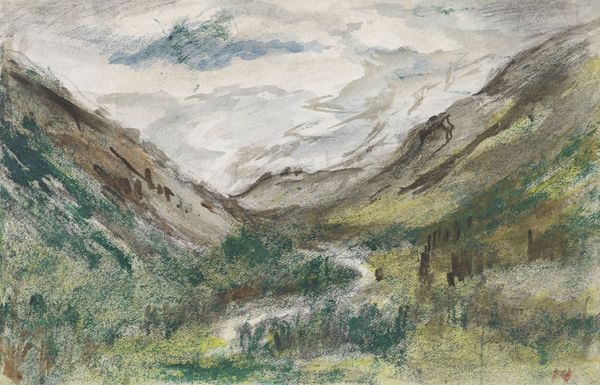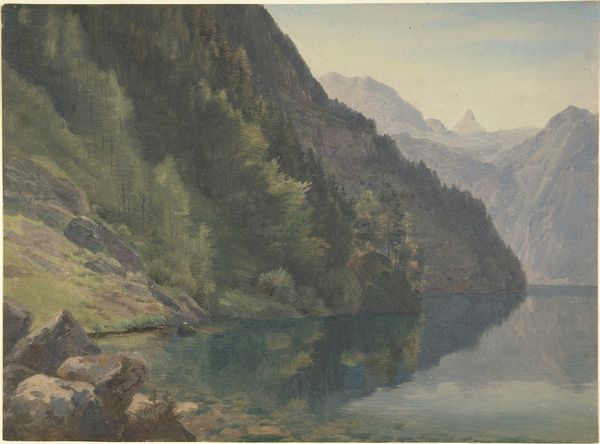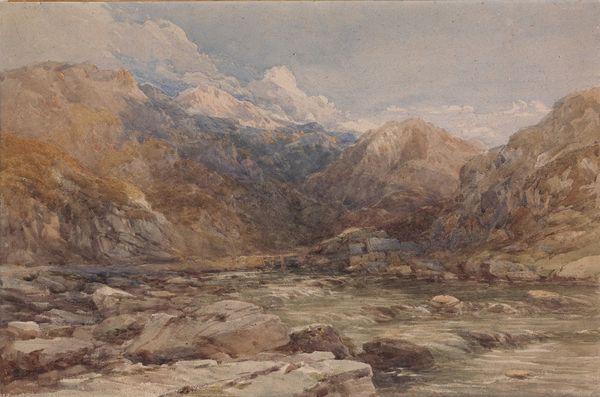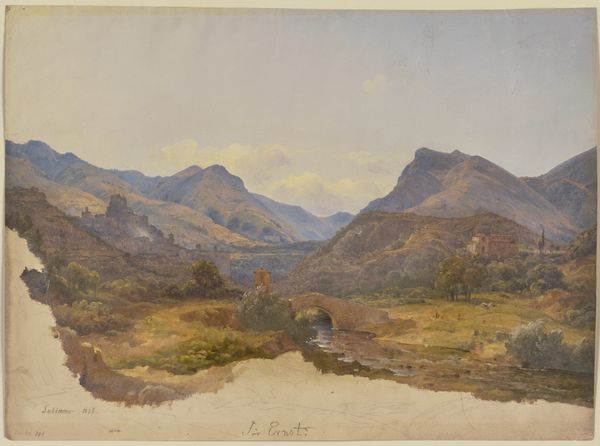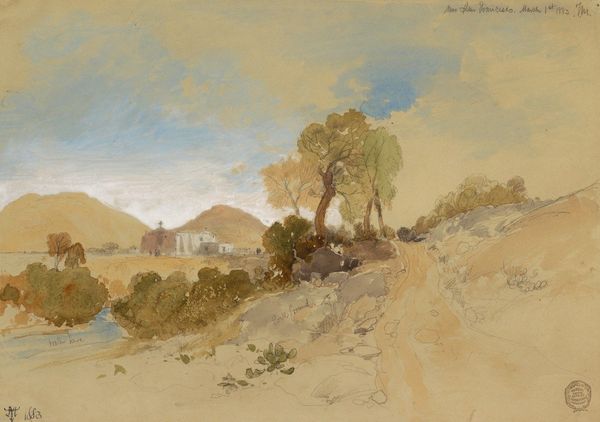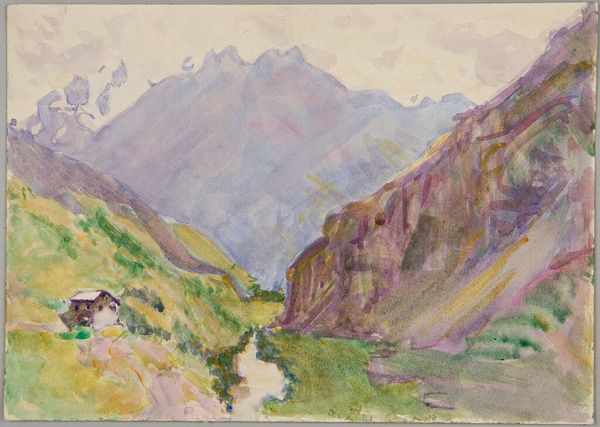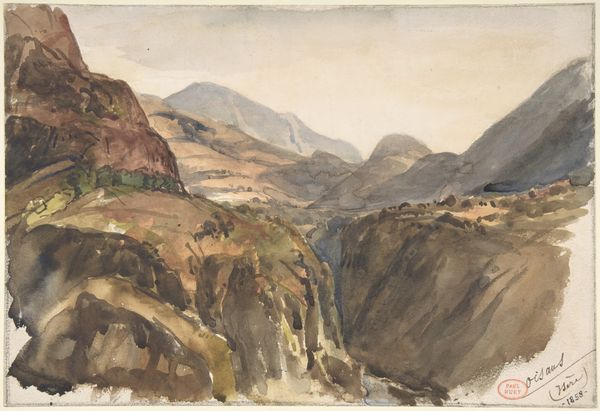
drawing, paper, watercolor
#
drawing
#
16_19th-century
#
landscape
#
paper
#
watercolor
#
german
#
romanticism
#
watercolor
Copyright: Public Domain
Curator: This is Johann Balthasar Bauer’s watercolor and ink drawing, "Mountain Landscape, Stream near Berchtesgaden." The Städel Museum houses this work reflecting the spirit of Romanticism. Editor: Immediately, I’m struck by the almost melancholic serenity. It’s washed in muted tones— blues and greens bleeding into browns, evoking a sense of solitude. Is it intended to be an undisturbed Eden, I wonder? Curator: It's interesting you mention solitude. Romanticism frequently embraced the sublime power of nature. Artists at this time depicted vast landscapes as a mirror for human emotions. Thinkers regarded landscapes as carrying significant religious connotations, with God manifested within it. It might resonate differently with contemporary eyes, considering current environmental anxieties. Editor: Precisely! We have lost sight of an untouched, idealized natural setting like this in many regions of the world due to extraction and the effects of capitalism, and colonialism's environmental impact cannot be overlooked either. The appeal to “nature” might now seem almost tragic, reminding us what has been compromised or erased. Curator: That resonates with Bauer's visual choices. Notice the symbols; he doesn’t focus only on pristine wilderness. He carefully balances wilder aspects with an ordered tranquility: the carefully defined edge of the forest that has likely been shaped over centuries of resource management or agrarian interventions. This balance allows the divine to still feel present despite what may feel, to us, a clear anthropogenic landscape. Editor: I’d push back a little, only to say, are we not idealizing resource management from previous centuries when labor injustices shaped extraction practices in almost every area? I realize this may fall outside of the scope of Balthasar Bauer’s focus, yet in my view it should be understood within its historical context, reminding us to examine and resist these forms of romanticization, so to speak. Curator: That's a fair point. Understanding the historical perspective—the ways nature was understood and depicted during the period—gives added meaning to current discussions of how our environment has been exploited through many extractive processes. I’m glad you invited those issues to the surface of this picture. Editor: I found it illuminating to think through how much an image like this invites multiple emotional interpretations that shift when viewing it through modern ecological and social consciousness.
Comments
No comments
Be the first to comment and join the conversation on the ultimate creative platform.
